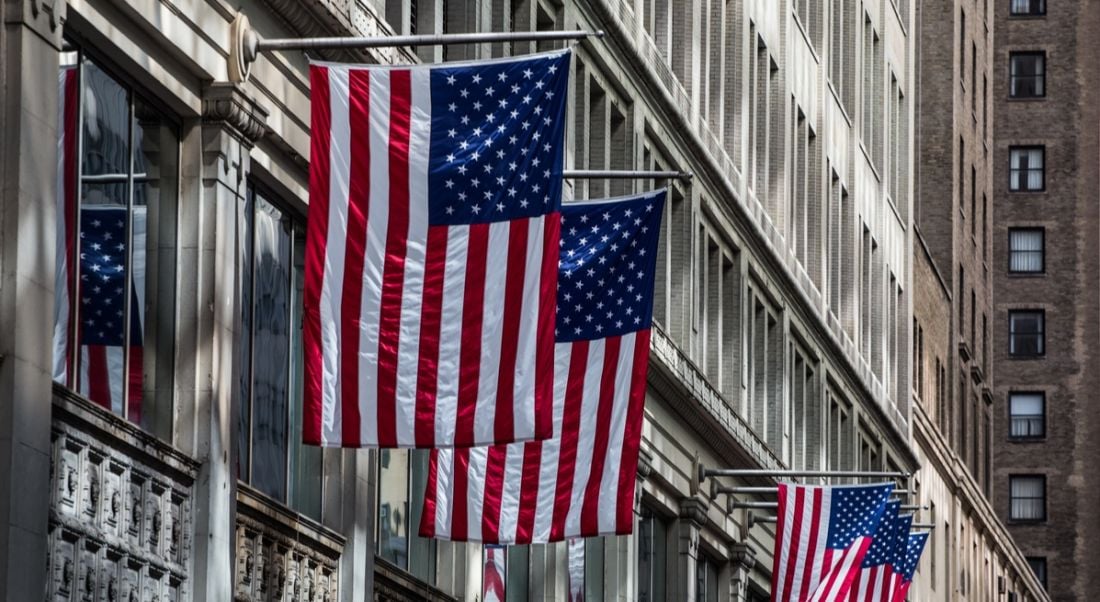The H-1B visa programme helps thousands of foreign tech workers to travel to the US for work. Will Trump put an end to it?
You could be forgiven for not knowing a lot about US president Donald Trump’s proposed changes to the H-1B visa.
Frankly, keeping up with the latest from the White House since the Republican president took office has been an emotional rollercoaster. The mind boggles as we are only one year into his term.
Trump campaigned on a platform of protectionist and anti-immigration policies. While very little of the former has come to being, the latter were famously fleshed out in lengthy battles between the executive and judicial branches to implement sweeping travel bans for those coming from a number of Muslim-majority countries.
This isn’t the only travel and immigration policy that has come into Trump’s crosshairs, however – there’s also the H-1B visa, which the president is threatening not to extend.
What is the H-1B visa?
The H-1B visa is, according to Workpermit.com, “a non-immigrant visa that allows US companies to employ graduate-level workers in speciality occupations that require theoretical or technical expertise”.
These types of qualifying fields include: IT, finance, accounting, architecture, engineering, mathematics, science and medicine.
In 2018, the cap for these visas was set at 65,000 in the general category and 20,000 in the advanced degree exemption category.
Due to the volume of applications received year on year – the US Citizenship and Immigration Services received 233,000 applications in 2016 – the allotment process includes a lottery system.
Who applies for H-1B visas, and who gets them?
More than 70pc of the H-1B visas approved in 2016 were given to Indian workers, and the second-largest group was Chinese workers.
While it is difficult to ascertain exact data about H-1B filings, there is a record of companies that apply for a Labour Condition Application (LCA), which is a Department of Labor approval filing and, essentially, the first step in filing for a H-1B visa.
Figures retrieved from the Department of Labor by Investopedia indicate that tech behemoths such as Apple and Microsoft file the highest amount of LCA applications in California and Washington state, respectively.
None of these companies are, however, among the top five sponsors. IT multinational Cognizant Technology Solutions had the most number of LCA applications overall, followed by Indian multinational Infosys.
The top jobs seeking approval to begin the visa processes are software developer or programmer, computer systems analyst and ‘computer jobs – other’.
Tech companies and the visa programme
Bar the obvious reasons why large tech companies would be the ones availing of the H-1B visa programme to bring in skilled workers – the programme is de facto a STEM worker visa – the process is also prohibitively expensive for smaller firms.
On average, filing for the visa and bringing over a skilled foreign worker will set companies back roughly $13,000, not including a caveat whereby employers must prove they already have the money to pay the employee’s salary for a given time.
As it currently stands, more Silicon Valley tech workers were born outside the US than in it (71pc of them, in fact), according to a 2017 report released by the Silicon Valley Competitiveness and Innovation Project, and most of them avail of this visa.
In anticipation of increased difficulty hiring immigrant workers, tech companies have already begun to stall such hiring.
What the US government has done
The fate of the H-1B visa programme is somewhat uncertain. On 18 April 2017, the US president signed an executive order entitled ‘Buy American, Hire American’, which codified stricter laws concerning entry to the US for employment.
The order specifically urged the US Department of Labor to recommend changes to the H-1B programme to ensure that only highly-paid, highly-skilled workers are allocated visas. It also sought to get rid of the current lottery system in place.
In October, USCIS also increased the level of scrutiny that visa extension applications are put under. Extensions are no longer assured, and the difficulty of attaining them is almost on par with the difficulty of getting the visa in the first place.
Already, these changes have manifested in an “unusually large number” of these visas being challenged by USCIS, as well as resulting in current applicants being mired in paperwork, making the process markedly more difficult.
In December 2017, it was announced that Trump had issued new rules repealing an Obama-era rule that allowed the spouses of H-1B visa holders to work, which will likely result in an increasing amount of these visa holders leaving America so that their spouses can work.
H-1B visas and the wages debate
Several companies have been accused of abusing the visa programme as a way to outsource American jobs and bring in cheap and foreign labour.
Opinions are mixed on the validity of this claim. On the one hand, the director of immigration law and policy research at the Economic Policy Institute, Daniel Costa, said that he believes the vast majority of companies are using the visa to “either hire the best and brightest and vastly underpay them, or to just hire younger workers for entry-level jobs”.
UC Davis computer science professor Norm Matloff has argued that companies such as Google are quick to bring in foreign workers on the visa programme because they are “cheap, immobile labour”.
He maintains that when these companies bring in workers and sponsor green-card applications, they essentially are making it impossible for that employee to move, lest they have to begin the lengthy residency process again.
That being said, research conducted by Dr Andrew Chamberlain, chief economist at Glassdoor, seems to indicate that this pay disparity is a myth.
In most cases, Chamberlain argues, foreign workers can expect to earn slightly more than their native counterparts. There are, he contends, a few noted exceptions – H-1B financial analysts, programmer analysts, software engineers and data scientists earn less than US counterparts.
Chamberlain notes that these findings mirror the results of a 2011 study that drew from US Census Bureau data.
In 2017, USCIS made data available indicating that some of the most prevalent H-1B sponsors pay foreign workers below-average wages, but that can be attributed to outsourcing companies having lower education requirements for their available roles.
The issue is far more complex, evidently, than the Trump administration makes it out to be, which calls into question whether these reforms are going to have the positive economic impact that he claims they will.
What will become of the H-1B visa?
It’s unlikely that the visa programme is ever going to be scrapped entirely. Ultimately, there are a lot of highly-skilled foreign workers that companies will still want and need.
However, it seems like Trump’s new measures are already making life more difficult and the conditions more precarious for those immigrants already in the US. Unfortunately, it doesn’t look like these workers will be provided with easement any time soon.




